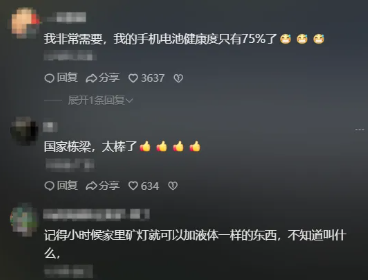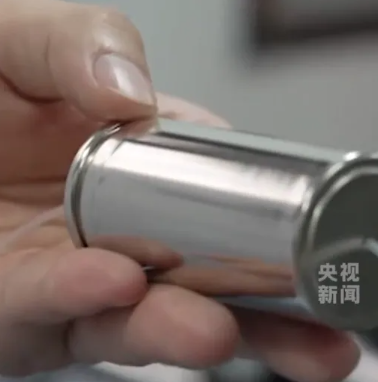Fudan University's 'battery injection technique' goes viral: What new opportunities will the lithium battery industry chain usher in?
Release time:2025-03-20
When electric vehicle batteries degrade to the point of being unusable and mobile phone batteries require three charges a day.
A team from Fudan University, by injecting lithium carrier molecules, increased the battery cycle life from1000-2000 timesto12000-60000 times(equivalent to extending the lifespan from "3 years" to "15 years").
Technological Breakthrough: Giving Batteries a 'Lifeline,' Increasing Lifespan by 10 Times
This achievement, named "external lithium supply technology," was recently published in Nature, its core principle overturning the 35-year design logic of lithium batteries.
Traditional batteries rely on the positive electrode material for "self-production and self-sale" of lithium ions, while the Fudan team's invention oflithium trifluoromethanesulfonate (CF3SO2Li)acts like a "lithium ion delivery service," directly "feeding" lithium ions to the battery through injection, bypassing the limitations of the positive electrode material.

Image source: CCTV News report
After screening 240 molecules, the Fudan team found that this substance is low-cost, highly compatible, and its effectiveness has been verified in real batteries.
A lithium iron phosphate battery with 85% capacity degradation, after injection, maintained 96% capacity after11818 charge-discharge cycles,and the theoretical energy density in the laboratory stage can even exceed1192Wh/kg(far exceeding the 300Wh/kg of existing ternary lithium batteries).

Experimental data: After injection, a battery with 85% degradationunderwent 11818 cyclesand maintained 96% capacity
Industry Chain Shock: Who Benefits? Who Suffers?
🔵 Beneficiaries: Battery manufacturers and recycling companies
▶ Leading battery manufacturers: Taking electric vehicles as an example, the cost of replacing batteries has dropped from 200,000 toaround 1000 yuan
▶ Battery recycling companies are experiencing a boom: A leading battery recycling company is deploying "in-situ repair" equipment with new technology,driving the industry to shift from "disassembly and recycling" to "repair and reuse"
🔴 Challengers: Lithium mining companies
▶ Lithium resource demand may sharply decrease: If the technology becomes widespread, lithium batteries' dependence on lithium mines will decrease—the original rule of "batteries must contain lithium" will be broken, and lithium mine demand may decrease.
▶ Lithium industry response or transformation: Currently, leading lithium mining companies have begun to deploy recycling businesses. For example, leading lithium mining companies are attempting to shift from "mining" to a "mining + recycling" dual model by taking stakes in battery recycling companies.
CCTV commentary: "We look forward to its early application."
Some netizens expressed a strong need for this technology.

Image source: Online comments
"Use and discard" 👉 "Lifelong maintenance", three new trends in the lithium battery industry
1. "Battery doctor" becomes a new profession
In the future, there may bebattery repair outletssimilar to "mobile phone repair shops," where professionals will test battery health, inject the corresponding dose of lithium carrier molecules, and charge only 1/10 of the cost of replacing the battery.
Electric vehicle users may even be able to schedule "on-site lithium replenishment" through an app, addressing range anxiety.
2. Energy storage industry welcomes a revolution
Energy storage power stations have extremely high requirements for battery life (more than 10 years), and the new technology can reduce their cost by 60%, accelerating the popularization of integrated photovoltaic and energy storage systems.
Imagine: A photovoltaic power station equipped with "repairable batteries" only needs lithium replenishment 2-3 times during a 20-year operating period, significantly reducing maintenance costs.
3. Material system reconstruction
The success of the lithium carrier molecule indicates a new direction of"separation of active substances and carriers".
In the future, there may be more "cobalt-free batteries," "nickel-free batteries," or even batteries made fromlow-cost raw materials such as plastics and carbon materials, completely eliminating dependence on scarce metals.
Two unsolved challenges: Environmental protection and safety tests
Gas emission issues: When the lithium carrier molecule decomposes, it releasessulfur dioxide and fluorocarbons. The former is carcinogenic, and the latter destroys the ozone layer. The team is developing an "exhaust purification module" to ensure that pollution problems are solved before commercialization.
Lithium dendrite hidden dangers: Although the technology can replenish lithium, it cannot eliminate the already formedlithium dendrites(short-circuit risk source). In the future, it will be necessary to combine other technologies (such as solid-state electrolytes) to truly achieve "safe resurrection".

Image source: CCTV News report
Conclusion: The "singularity moment" of the lithium battery industry
The breakthrough by the Fudan teamis not only a technological revolution, but also a reconstruction of industrial logic—
Lithium miners need to learn "reverse mining";
Battery factories need to shift from "selling products" to "selling services";
Consumers will witness the arrival of the era of "a battery for life".。
While Tesla is still anxious about range anxiety, Chinese scientists have quietly written a new answer for the future of lithium batteries.
This industrial earthquake triggered by "an injection" has only just begun.
Disclaimer: Some materials (including pictures) in this article are reproduced from online materials and are only for learning and exchange purposes. They are not for commercial purposes, and the copyright belongs to the original author. If there are any disputes regarding the content of the work, copyright, and other issues, please contact the email address for communication and processing.cj017@spcmach.comThis platform will verify and reply within 24 hours. This article may not be reproduced without authorization. We will not bear any legal responsibility for any consequences or disputes caused by reproduction.
New energy technology,Give the lithium battery a shot,Lithium-ion injection into lithium batteries,Lithium battery repair
Related News
Focus on us



